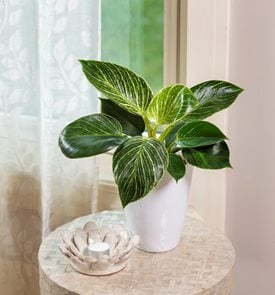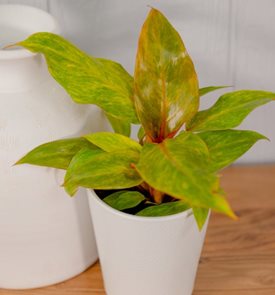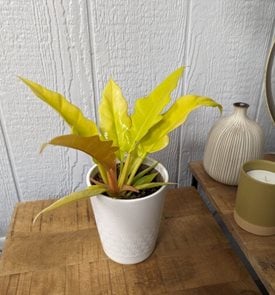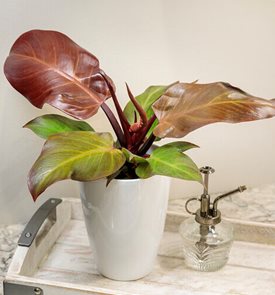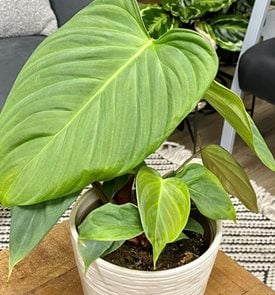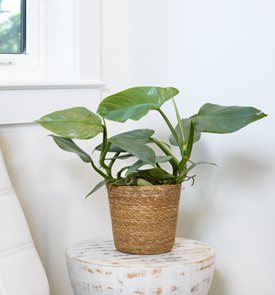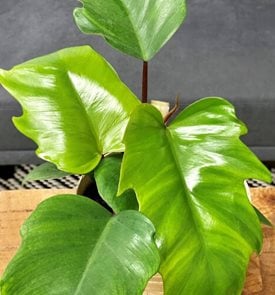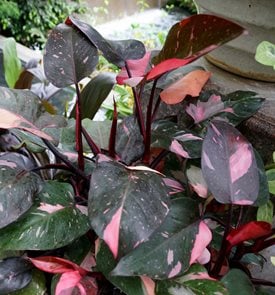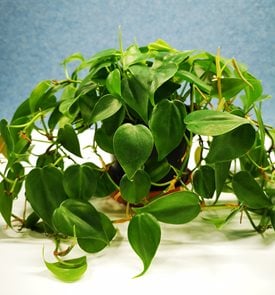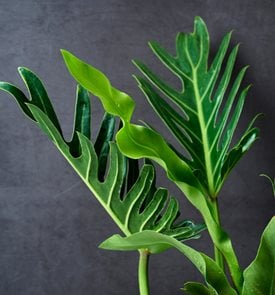How to Grow & Care for Philodendrons
Introducing some of our favorite types of philodendrons to bring a touch of the tropics indoors
Prismacolor™ Orange You Gorgeous™ Orange Marmalade philodendron.
Photo by: Proven Winners.
If you love indoor plants, chances are you’ve grown at least one philodendron. These easy-to-grow houseplants can also be grown outdoors in some tropical climates. They’ve long been the go-to starter plant for new plant parents because they adapt well to indoor environments.
Many experienced indoor gardeners find them irresistible as well because they offer a variety of sizes and growth habits including vines and tall, treelike shrubs. The smooth, glossy leaves also vary widely in color and form‐from small and heart-shaped to large and lavish.
2025 HOUSEPLANT OF THE YEAR: Prismacolor™ Orange You Gorgeous™ Orange Marmalade philodendron
On this page: Basics | Growing Tips | Philodendron Pictures | Common Problems | Display Ideas
On this page:
BASICS
Origin:
Native to tropical regions of Central and South America.
Care level:
Easy.
Light requirements:
Philodendron plants grow best in medium to bright natural or fluorescent light, but will also tolerate low light. Avoid exposing to direct sunlight, which can burn the foliage.
Growth rate:
Moderate to fast.
Foliage:
Although heart-shaped leaves are the norm, you’ll also find varieties with spade-shaped, deeply cut, and spear-shaped leaves, some growing to more than 2 feet long. Some of the newer hybrids (such as ‘Pink Princess’ and ‘Prince of Orange’) sport foliage in vibrant shades of burgundy, pink, orange, and yellow. There are also cultivars with variegated foliage.
Size:
Non-climbing types: 6 to 8 feet. Vining varieties: 10 feet or more when supported.
Toxicity:
Leaves can be toxic to both people and pets when ingested. Some people can also have a mild allergic reaction if their skin comes in contact with the sap. When repotting or pruning plants, wear gloves as a precaution. See more Common Poisonous Plants for Dogs and Cats.
Do philodendrons flower?:
They may produce spade-shaped flowers when grown outdoors in a tropical climate, but it’s extremely rare for indoor philodendrons to bloom.
Philodendron lookalikes:
Two plants often mistaken for philodendrons are pothos (Epipremnum aureum) and Swiss cheese plant (Monstera deliciosa), which is sometimes erroneously called “split-leaf philodendron”. Like philodendrons, these plants are members of Araceae, the arum family, and share many common characteristics; however, there are distinct differences that make each plant unique.
PHILODENDRON CARE & GROWING
Where to grow:
The best spot is near a window where the sunlight does not directly hit the foliage. Avoid placing your plants near cold drafts or heating and air-conditioning vents. You can also treat them to a summer vacation outdoors as long as you keep them in a spot shaded from direct sunlight.
Temperature and humidity:
The ideal temperature is between 65° and 85° F during the day and around 60° F at night. If you grow your plants outdoors during the summer, bring them inside before the temperatures drop below 50° F. These tropical plants prefer a humid environment, but will tolerate average home humidity levels.
Soil type:
Use a good-quality potting mix that drains well.
Watering:
Grows best in evenly moist soil, but not soggy. A good rule of thumb is to water when the top inch of the soil is dry to the touch. Never let the soil go bone dry. Overly wet soil can cause root rot.
Fertilizing:
From spring through fall, feed monthly with a water-soluble houseplant fertilizer, following the dosage recommendations on the package.
Propagation:
Because of their aerial roots, climbing varieties are very easy to propagate. Simply take a stem cutting with several leaves attached, and stick it in a glass of water or moist potting soil. You can even grow cuttings permanently in water if you feed them frequently with liquid plant food. For non-vining types, divide every 3 to 5 years by cutting through the roots with a serrated knife.
TYPES OF PHILODENDRONS
See more Prismacolor™ philodendron plants from the leafjoy® line from Proven Winners.
COMMON PROBLEMS: PHILODENDRONS
Philodendrons will often tell you when they are unhappy if you learn to recognize the warning signals.
- Yellow leaves are often a sign of overwatering, an undersized pot, or exposure to drafts or cold temperatures.
- Brown or curled leaf tips can be a sign of too much sunlight or too much water. It can also be a sign of not enough water or fertilizing when dry (always water well before fertilizing).
- Slow growth and stems that are long and leggy may indicate insufficient light or the need for fertilization.
- Dropping older leaves is normal; the climbing types shed their lower leaves as they grow.
DISPLAY IDEAS
- Allow vines to cascade from a hanging basket or drape from a shelf above a doorway to create a tropical, jungle-like atmosphere. (See: 10 Best Indoor Hanging Plants)
- Use variegated varieties as colorful spillers planted in combination with taller houseplants.
- Train vining philodendrons to climb up a column or wrap around a window frame. Attach the stems to your supporting structure with florist tape until they shape themselves around it.
- Help climbing philodendrons go vertical by sticking a decorative trellis or pole into the pot for them to grab onto. A rough surface, such as a sphagnum or rope-covered plant pole, will give them something to cling to. You can even create a philodendron topiary by training it around a cone-shaped support.
- In mild climates, consider growing philodendrons outdoors in a shady area as a fast-growing groundcover; or allow them to vine around a tree trunk, trellis, or other vertical support.
RELATED:
21 Best Indoor Plants
Best Low-Light Houseplants
A Guide to Growing Pothos
How to Care for Your Fiddle-Leaf Fig
Growing Spider Plants
